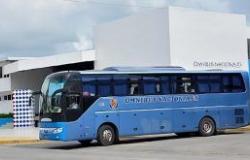According to the recent report from the Congressional Budget Office, non-automatic transfers during the first quarter of 2024 were reduced by 89.5%. La Rioja, Formosa and La Pampa had the largest reductions.
20:21 | Friday June 7, 2024 | La Rioja, Argentina | Fenix Multiplatform
Regarding non-automatic transfers, the recent report from the Budget Office of the National Congress indicates that during the first four months of 2024, these funds were reduced by 89.5% compared to the same period of the previous year. They went from $295,920 million to $108,997 million.
Within this category are transfers to finance current expenses, which went from $197,541 million to $100,951 million. Among the main reductions is the National Teacher Incentive Fund (FONID), used to improve the salary of provincial teachers (-80.7%); the Fiscal Strengthening Fund of the Province of Buenos Aires, created in 2020 to mainly finance security expenses and which was repealed in February 2024; and the Provincial Pension Funds (-100%), among others.
Transfers to finance public works are the other subcategory of non-automatic transfers and were also reduced from $98,379 million to $8,046 million. Within these expenses, the main cuts fell on funds for sanitation works (-91.4%); construction of provincial road works (-100.0%); and financial assistance to provinces and municipalities (-100%).
If the evolution of non-automatic transfers between provinces is analyzed, The greatest reductions occurred in La Rioja (-97.3%), Formosa (-93.5%) and La Pampa (-93.8%). While at the other extreme are Chubut (-65.7%), Jujuy (-76.4%) and the Autonomous City of Buenos Aires (-81.0%).
For Rafel Flores, an economist specialized in fiscal policy, this is “a drop never seen before, particularly in discretionary transfers to provinces.” For Flores, although non-automatic transfers are discretionary, many of them are subject to established criteria, such as the FONID, health and public works programs, among others.
“By cutting many of these programs, it is likely that scenarios of conflicts and strikes will deepen in the provinces and that public policies that have an impact on the population will no longer be implemented,” he explained to Chequeado.
According to the specialist, the numbers for the first quarter suggest that “there is no prioritization analysis of the expenses that are cut and their consequences in the future, that is, there is no analysis of the quality of the adjustment.”
How did automatic transfers to the provinces evolve?
When it comes to automatic transfers, the same OPC report shows an average reduction of 19%. Among the districts with the greatest reductions are the Province of Buenos Aires (-20.5%), the Autonomous City of Buenos Aires (-19.1%), and Chubut, Misiones and Salta (-19.1%). On the other hand, those that had the smallest reductions were San Luis (-18.3%), Catamarca (-18.4%) and Córdoba (-18.5%).
According to a report from the Argentine Economic Center (CEPA), the strong reductions in provincial resources, and in particular those that could be shared, were due to the economic recession: “The impact of the fall in activity, added to the retraction of the tax to the Profits of the fourth category was sensitive in the collection.”
On the other hand, according to a report from the Argentine Institute of Fiscal Analysis (IARAF), the amount of total real automatic transfers in the first four months is the worst in the last 9 years.






